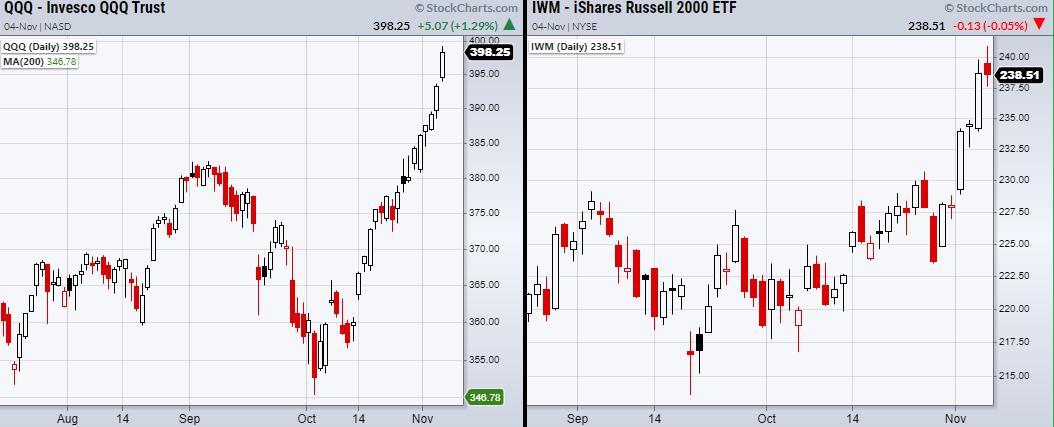
The S&P 500 (SPY) and the Nasdaq 100 (QQQ) both sit at highs, while the small-cap Russell 2000 (IWM) digests its recent breakout.
Triggered from Wednesday's bullish Fed meeting, the overall market has made a huge push Thursday. While many traders are loading up on positions, it is also a great time to sell into strength. This is a smart strategy for taking profits because large moves are often followed by digestion days, where the market consolidates or pulls back for a breather. Knowing where to take profits is a highly debated topic, which is why traders must have pre-determined rules for doing so. One common rule is to place a profit target that is at least double the dollar amount you risked on the trade.
However, no matter where you take a profit, it is highly unlikely you will pick the top. Nonetheless, many traders feel as though they've left money on the table, and while the disappointment can hurt, this is completely normal and part of trading. With that said, selling into strength is a great way to take profits and, paired with some simple rules, can make it even easier to keep your emotions in check while doing so.
To jump right in, we should understand that many traders hate taking profits when they find they could have made much more money. Some even feel the same amount of discomfort comparable to taking a loss on a trade. While this seems like a crazy way to think, it happens more often than you might expect, as, while trading can be very technical, it can also be very emotional. Therefore, we should implement rules to help us trade with confidence and keep our minds clear for the next great trade.
Besides having strict rules as stated before, like selling once you have made a return greater than double your risk, one can also sell small portions of their trade instead of selling the full amount. This may seem simple, but, for example, if you sell 25% of your position into strength, you will not only take profits but also have the confidence to let the trade continue with much less emotional baggage. If the trade sells off, you will feel better knowing you took some profits. On the other hand, if the trade continues higher, you still have most of your position and can incrementally continue to sell. Either way, this gives someone the confidence to let a trade have more space to work and the emotional freedom to better manage the position without focusing too much on dollars made or lost.
Follow Mish on Twitter @marketminute for stock picks and more. Follow Mish on Instagram (mishschneider) for daily morning videos. To see updated media clips, click here.
Watch Mish on TD Ameritrade!
ETF Summary
- S&P 500 (SPY): 454 main support.459 minor support the 10-DMA.
- Russell 2000 (IWM): 234.53 support. Digestion day.
- Dow (DIA): 356.60 support. Doji day.
- Nasdaq (QQQ): New highs. 382.78 main support.
- KRE (Regional Banks): Inside day. 72.90 support area.
- SMH (Semiconductors): Large range day. 277 main support.
- IYT (Transportation): 280 resistance.
- IBB (Biotechnology): 160.27 support the 200-DMA.
- XRT (Retail): Doji day. 98 support area.
Forrest Crist-Ruiz
MarketGauge.com
Assistant Director of Trading Research and Education






